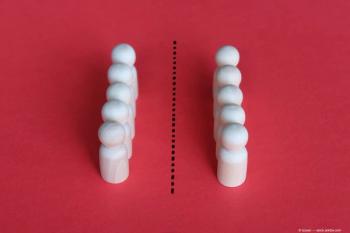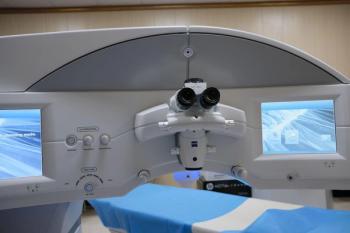
LASIK enhancements for premium IOLs more accurate with less dry eye
Ophthalmologists must be prepared to perform corneal refractive surgery enhancements after cataract surgery-and LASIK is often the optimal choice, according to Robert K. Maloney, MD.
Reviewed by Robert K. Maloney, MD
Ophthalmologists must be prepared to perform corneal refractive surgery enhancements after cataract surgery--and LASIK is often the optimal choice, according to Robert K. Maloney, MD.
Although data from MarketScope indicate only about 5.9% of patients require enhancements with laser refractive surgery after premium IOLs, Dr. Maloney believes that is enough to push the envelope.
"A 6% failure rate is not a lot but it is enough to discourage a surgeon pretty quickly,” said Dr. Maloney, Maloney Vision Institute, Los Angeles. “A certain number of patients will need refractive touch-ups for astigmatism, hyperopia, and myopia. Refractive surgery needs to be in your corneal armamentarium.”
Surgeons’ options for premium IOL enhancement after cataract surgery include LASIK, PRK, limbal relaxing incisions (LRIs), and IOL exchange. However, LASIK or PRK is the most common.
Dr. Maloney cited research findings that LASIK is more accurate than PRK.1,2 In one such study led by Manche et al.,1 68 eyes in 34 patients had one eye that had PRK and the second eye that had LASIK.
“The standard deviation of LASIK was less than PRK,” he said. “That’s the best measure of accuracy as it tells you how spread out the data is.”
Other unpublished research
In Dr. Maloney’s own unpublished research, the standard deviation was also less for LASIK than PRK. In fact, the difference between the two types of surgery was consistent even among lower corrections.
“With low corrections, which they typically are after cataract surgery, LASIK is even better,” he said.
Ocular surface disease is another surgeon concern after LASIK in cataract surgery patients who tend to be older. Again, Dr. Maloney cited research that found no difference in dry eye among patients randomized to PRK and LASIK.3,4
Another study examined the incidence of dry eye in pseudophakic patients and found no difference between the two surgical approaches.4 In Dr. Maloney and colleagues’ analysis of more than 700 patients, there was no difference in dry eye occurrence, but PRK tended to cause more recurrent erosions.5
The studies indicate that LASIK enhancement after cataract surgery seems to be as good as LASIK in virgin eyes, Dr. Maloney said. The one area where it may cause more problems is if the patient has had previous LASIK. However, this is not a surprising finding, he added.
Surgeons should also consider other refractive options, such as LRIs for residual astigmatism if the spherical equivalent is within 0.25 D of plano, or IOL exchange or piggyback IOL for larger corrections or for patients with ocular surface disease.
References
1. Manche EE, Haw WW. Wavefront-guided laser in situ keratomileusis (LASIK) versus wavefront-guided photorefractive keratectomy (PRK): a prospective randomized eye-to-eye comparison. Trans Am Ophthalmol Soc. 2011;109:201-220.
2. Shortt AJ, Allan BD, Evans JR. Laser-assisted in-situ keratomileusis (LASIK) versus photorefractive keratectomy (PRK) for myopia. Cochrane Database Syst Rev. 2013 Jan 31;1:CD005135.
3. Murakami Y, Manche EE. Prospective, randomized comparison of self-reported postoperative dry eye and visual fluctuation in LASIK and photorefractive keratectomy. Ophthalmology. 2012;119:2220-2224.
4. Schallhorn SC, Venter JA, Teenan D, et al. Outcomes of excimer laser enhancements in pseudophakic patients with multifocal intraocular lens. Clin Ophthalmol. 2016;10:765-776.
5. Hovanesian JA, Shah SS, Maloney RK. Symptoms of dry eye and recurrent erosion syndrome after refractive surgery. J Cataract Refract Surg. 2001;27:577-584.
Robert K. Maloney, MD
This article was adapted from Dr. Maloney’s presentation at the 2016 meeting of the American Society of Cataract and Refractive Surgery. He is a consultant for Calhoun Vision, Johnson & Johnson Vision, and Presbia.
Newsletter
Don’t miss out—get Ophthalmology Times updates on the latest clinical advancements and expert interviews, straight to your inbox.



















































.png)


